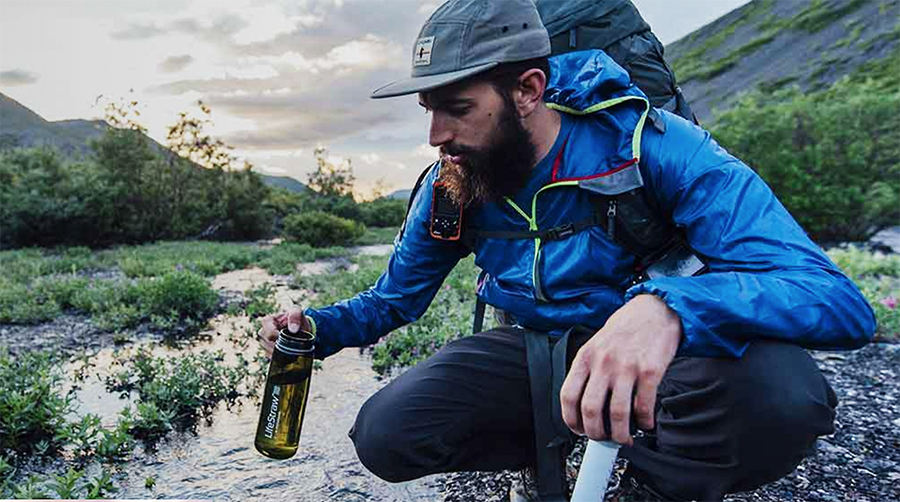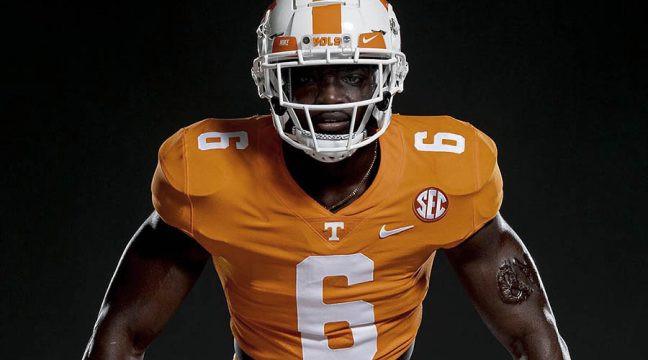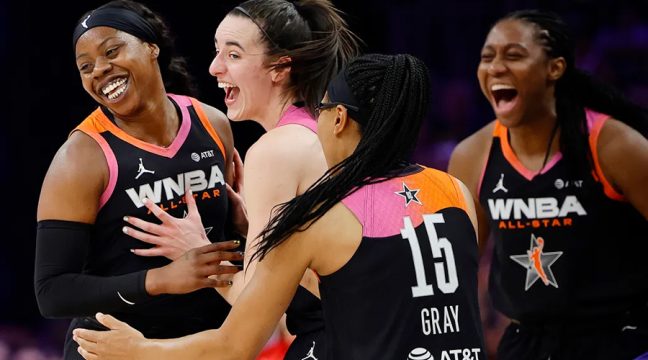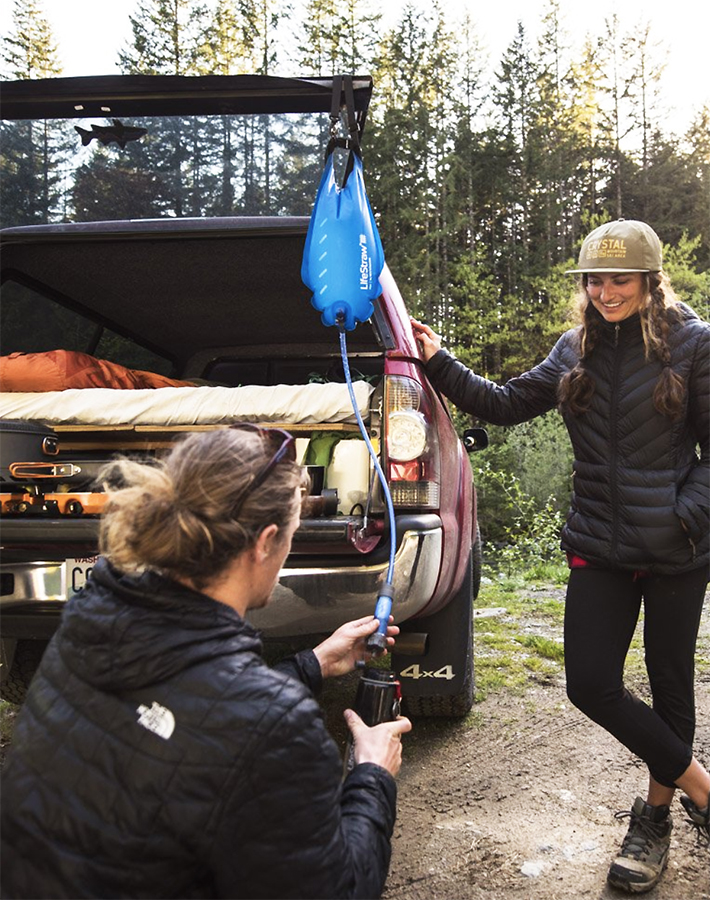 LifeStraw knows what it means to be a Sustainable company and to Give Back.
LifeStraw knows what it means to be a Sustainable company and to Give Back.
Part of parent company Vestergaard, whose mission and values are based around improving people’s health and quality of life in developing communities, LifeStraw for many years has had a focus on those communities in developing countries, but over the last three-to-four years, the brand has recognized a number of things.
Poverty and access to safe drinking water is not limited to the developing world. Right here in the U.S., we have significant challenges with our water quality and also equitable access to safe water.
With our aging infrastructure, we have heavy metals, pharmaceuticals, chemicals, microbiological contaminants, and microplastics in our waterways and in our drinking water.
<span style="color: #808080;">Alison Hill, Managing Director for LifeStraw, understands that water quality issues in a place like South Sudan and water quality issues in parts of the U.S are considerably different; however, when we talk about health and improving the quality of lives for people at risk or people in developing communities, those communities are sometimes right here in the United States.
As a result, LiveStraw is on a mission to continue to expand their Giving Back program in two different ways. One, embracing the concept of inclusivity whether you live in a developing country or here in the U.S. and Two, as a responsible company, finding solutions to improving and preventing contamination of worldwide water sources, protecting water sources, and cleaning up the issues that we created through product and technology.
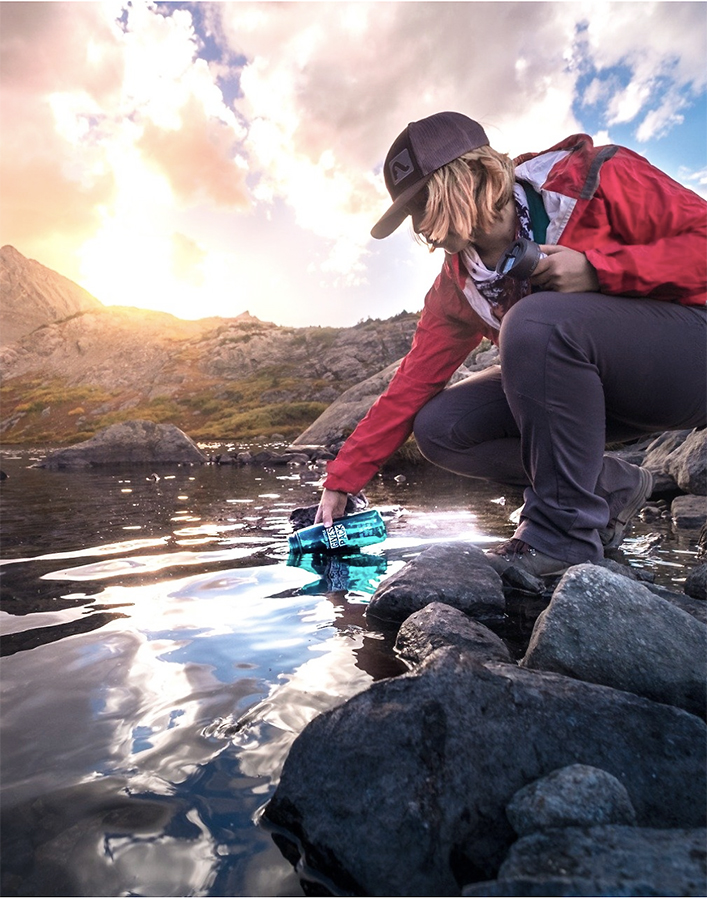
In the last 18 months, LifeStraw’s approach to partnership has been to embrace both sides of this coin. They recently partnered with The Conservation Alliance whose mission is to engage businesses to fund and partner with organizations to protect public lands and watersheds, as well as committing to give back through products and technologies that protect people from water sources that are already contaminated.
Alison is also part of the Vestergaard Executive Committee. Through her guidance, LifeStraw’s responsibility to raise awareness with Vestergaard has connected and resonated with their customer base.
—•—
“Our customer base, especially in the outdoor markets, looks at global problems, social equity, environmental conservation, wants to be a part of the solution, but they also recognize that the environmental threats, social inequalities, access to safe water that they experience in their homes and their communities homes are as important as they see the rest of the global population battling this. This personalizes issues that we were not meeting for our customer base in the U.S.” — Alison Hill
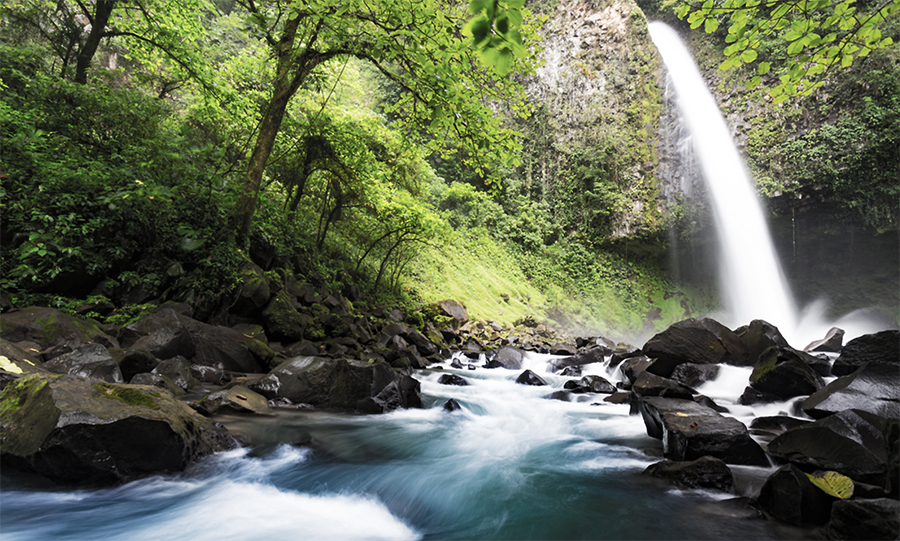
<span style="color: #808080;">Customers have been asking LifeStraw to do more locally for a long time, and LifeStraw is finally in a position to be able to do that. When Alison recognized about five years ago that the U.S. was having emerging issues in water quality and that LifeStraw’s customer base were voicing their requests for LifeStraw to get more involved locally, she did not have a product or a technology combination that really provided a true solution to the issues we were having here in the U.S. The issues were much more focused on our heavy metals from our aging infrastructure. It took a considerable investment in time and resources in LifeStraw’s product pipeline to make sure they were bringing to the market the right products to answer this rather than taking products that they had and making a marketing program to show that LifeStraw was giving back.
Because LifeStraw is not a traditional retail company with a give back program, but much more of a public health company with a retail program, the due diligence with which the brand provides solutions for issues that they see is significant. LifeStraw needed to make sure they had the evidence behind solutions before they made a claim that they were doing it. And it is important to the brand that their customer base understands not only how LifeStraw defines themselves as a responsible company but also how they are addressing the concerns that they have.
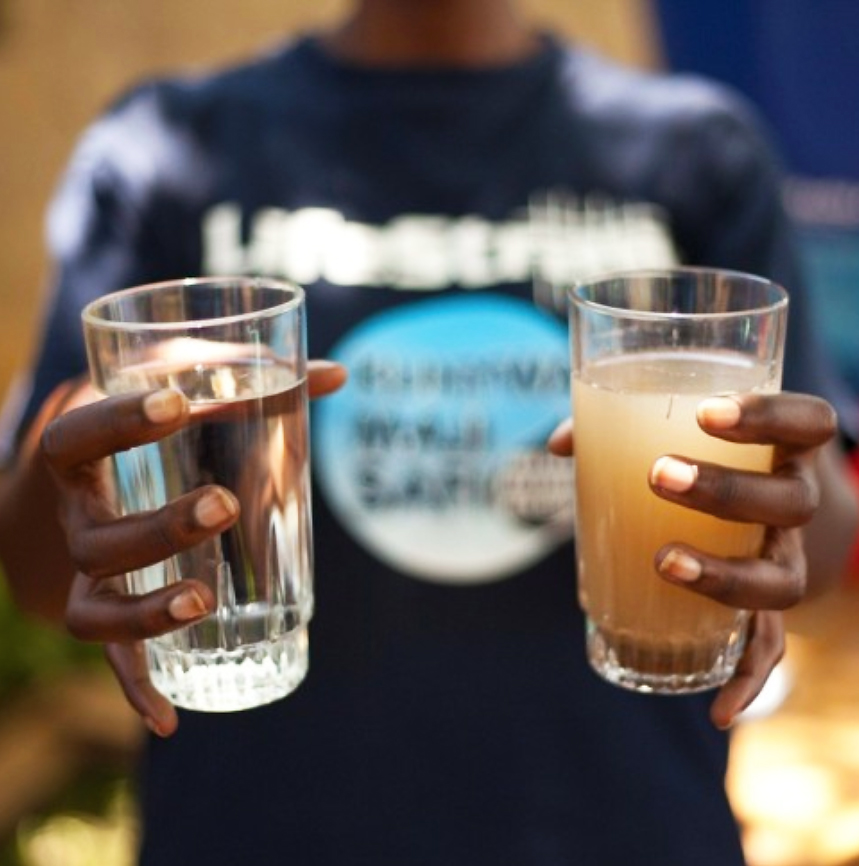 LifeStraw also believes it’s very important for the outdoor industry retail base to start being able to provide a customer base that wants more from their brands with an authentic story and also credibility behind the claims that brands make.
LifeStraw also believes it’s very important for the outdoor industry retail base to start being able to provide a customer base that wants more from their brands with an authentic story and also credibility behind the claims that brands make.
A company like REI has a huge amount to gain from bringing to their members brands that are credible, authentic, and that are focused on doing good in the world from an environmental, social and health perspectives — and that are delivering more to the customer than just a product.
Emerging trends in Millennial and GenZ consumers show they are asking more from brands than just a product. Retailers, like REI, are being able to offer them that, and that story gives them an advantage in a retail market that is challenged today on the brick-and-mortar side to be able to compete with eCommerce.
—•—
“Brand messaging is important but authenticity is king. It takes more than a sentence on packaging or a sentence on your product description on an eCommerce site to generate buying decisions with today’s consumer base. It is about consistently telling a message about your investments in social and environmental programs.
Consistency across all channels is important whether someone buys in a store or on line. LifeStraw believes, in the online environment, that level of authenticity in brand and brand investment because if you want more from a brand, and you are looking on line, the first thing that you do is Google the brands. What are they up to? What do they stand for? The level of authenticity and consistency that you have about everything you and your brand stands for and are working towards, is incredibly important with today’s consumer whether they purchase on Amazon or REI.com.” — Alison Hill
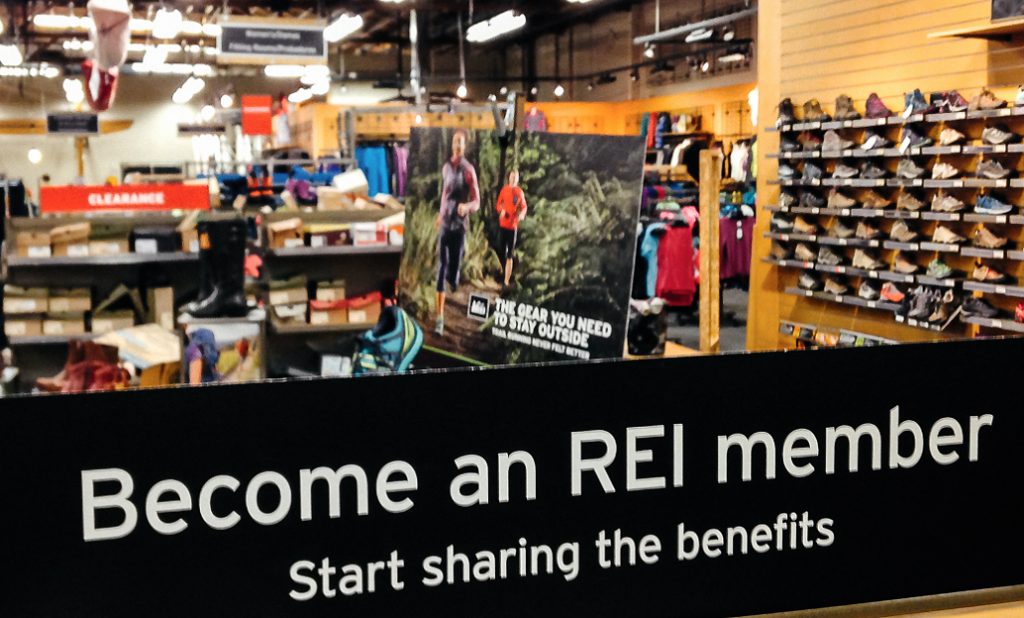
For LifeStraw, you always have to be able to serve your customer first. What does your customer need? How can you provide it to them and how can you provide it to them at a price that allows them to access best product, best technology and not break the bank.
“Price and being competitive is always a piece of it, but when you look at the research of philanthropic engagement and philanthropic interest, consumers that want to play a bigger role or want brands that give back, they don’t divide nicely down in economics for an educational segregation. Again, it’s about authenticity of the brands and how well you communicate that to the consumer segments that have a need for the products.” — Alison Hill
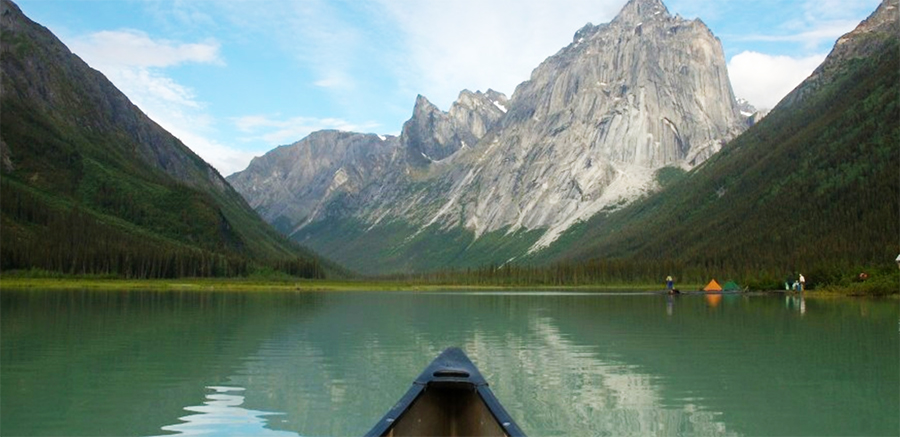
“LifeStraw will continue to expand the brand’s partnerships that complement out values but also complement what we are doing starting with The Conservation Alliance. “We live in a polluted society of our own creation. We all need to be better stewards of our planet and taking conversation seriously. That’s the foundation for LifeStraw to start to work with an organization like The Conservation Alliance. LifeStraw does not want to make just an annual membership due to have their partnership on the brand’s website, but create ways that LifeStraw can continue to fund TCA throughout the year to protect our natural lands and watersheds.” — Alison Hill
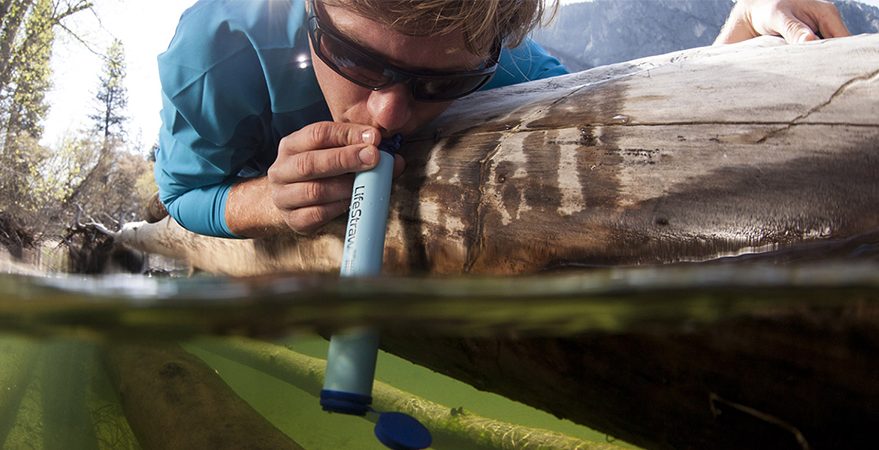
At OR this month, LifeStraw will announce their Safe Water Across America campaign with AirStream and a partnership with Cascade Gear because they stand for what LifeStraw stands for — that consumers should expect more from the brands that they choose to purchase and that those brands can work together to make change.
Last year, with LifeStraw’s Give Back program, the brand reached just over one million children with safe drinking water. By the end of 2019, LifeStraw is committed to growing that number to three million children who will have received a year of safe drinking water from the retail efforts they’ve made with a component of that having a domestic face to it. Photos courtesy LifeStraw, The Conservation Alliance

